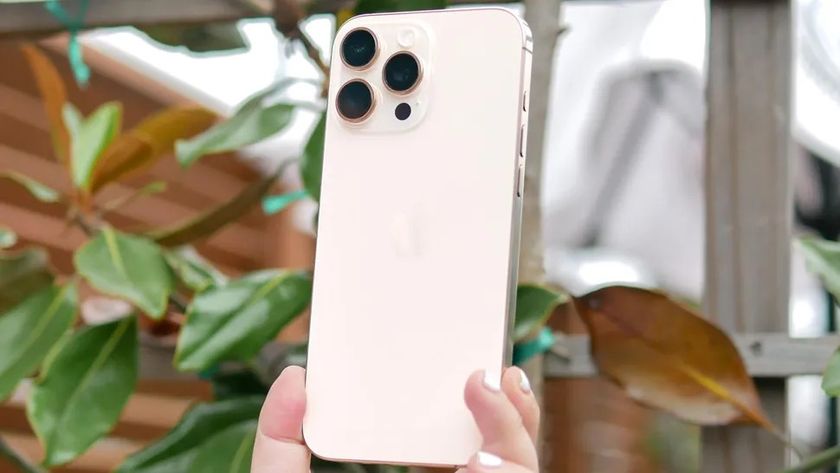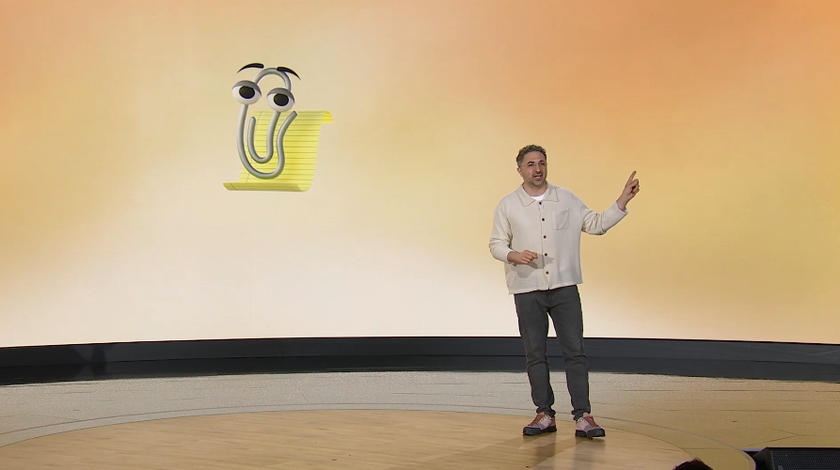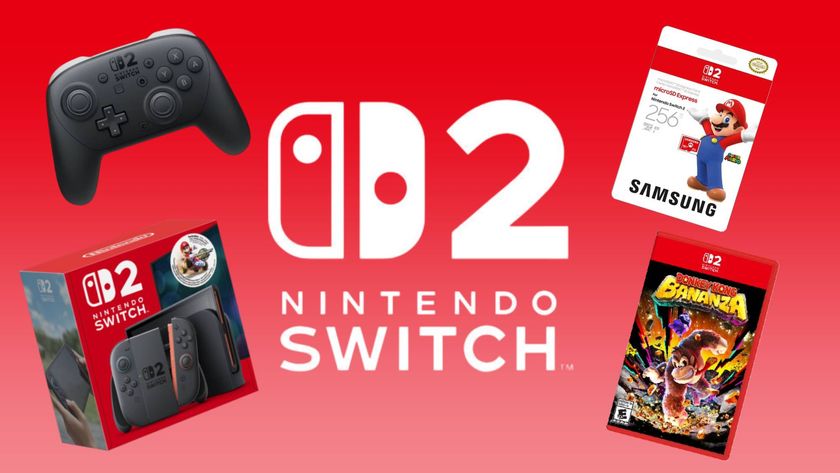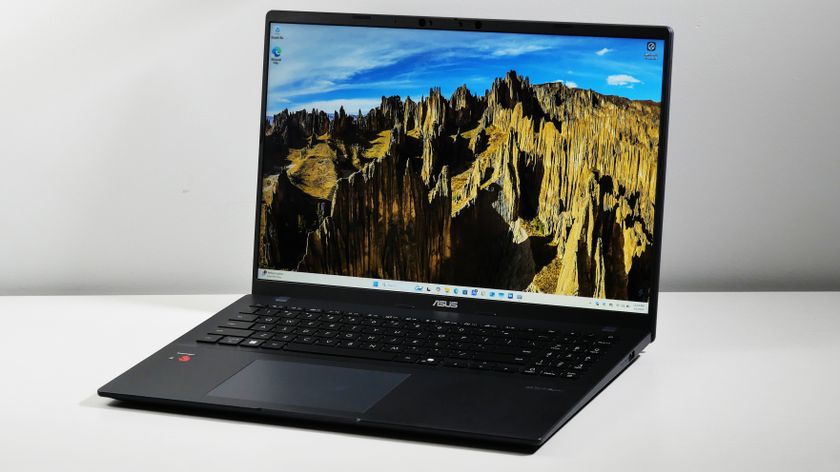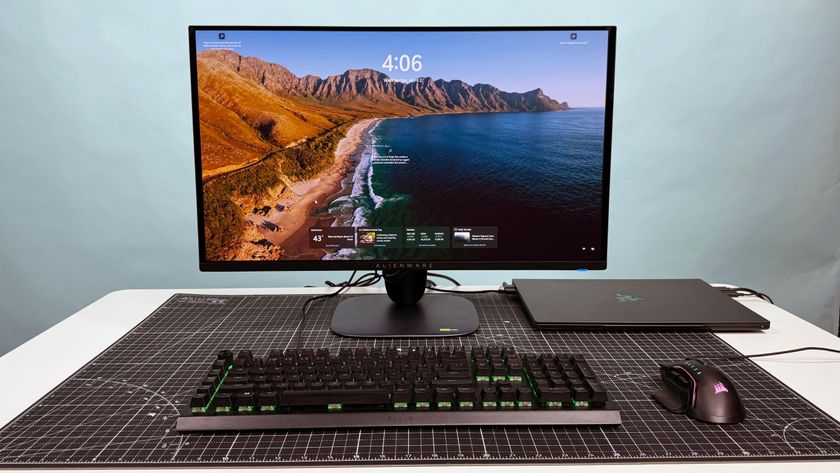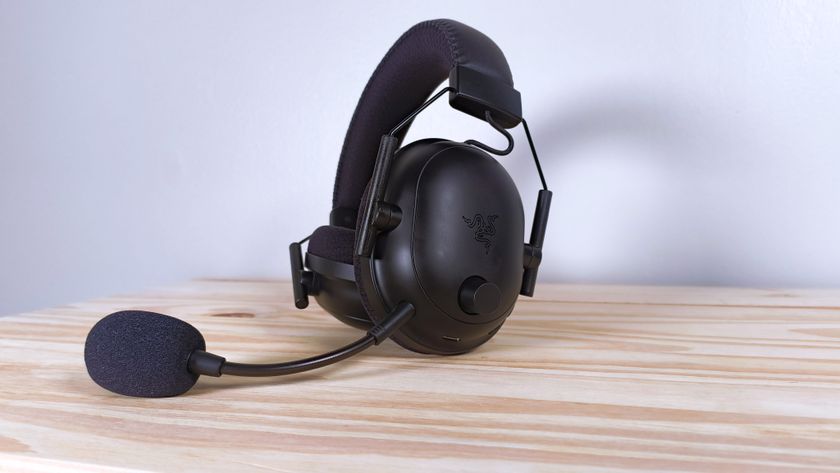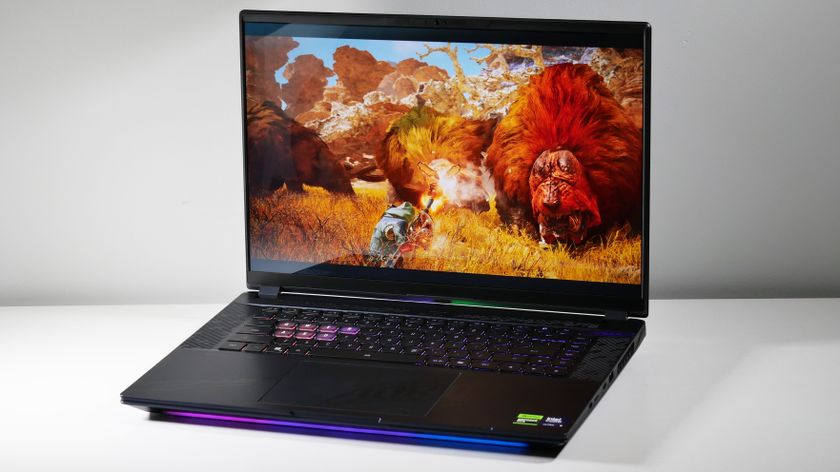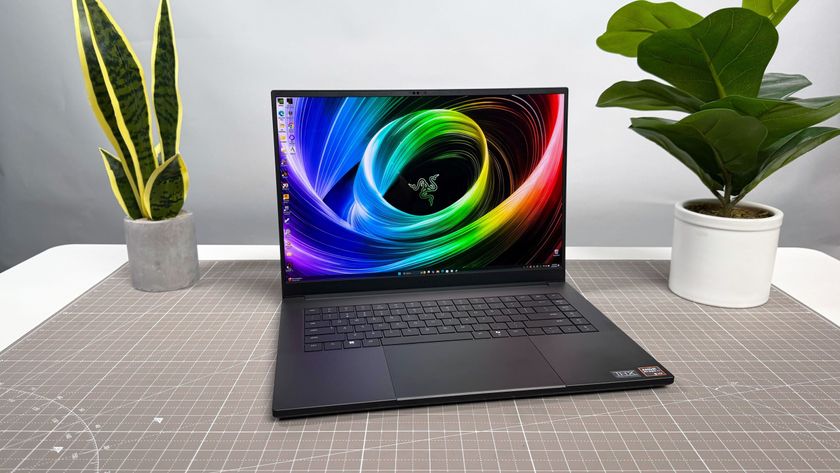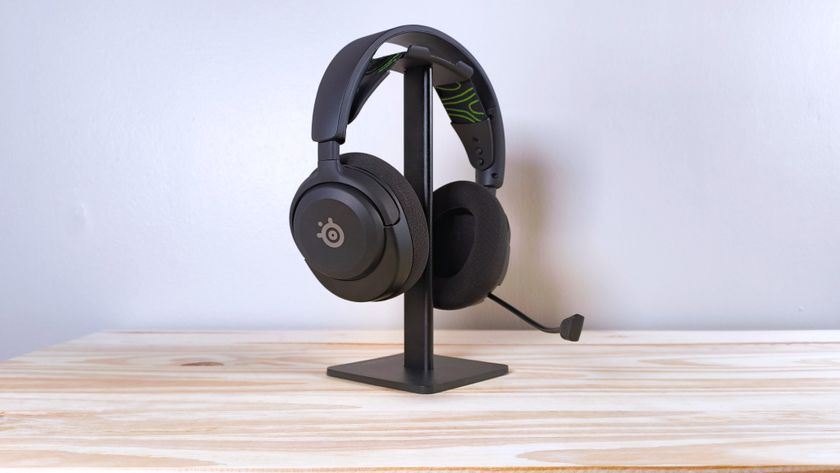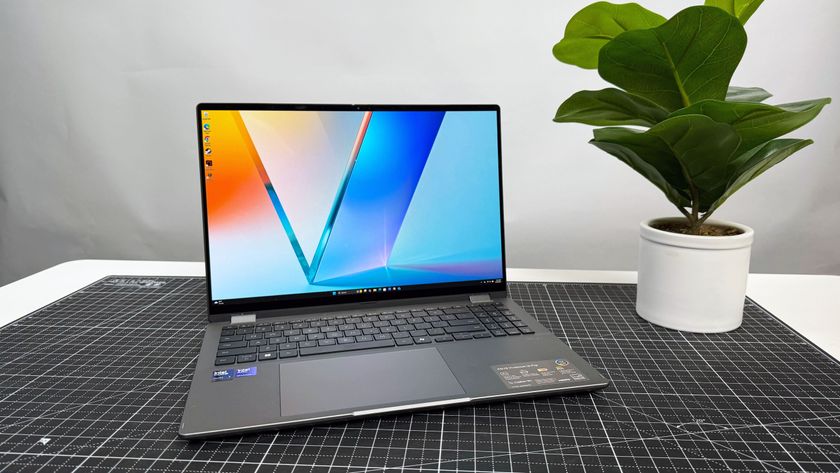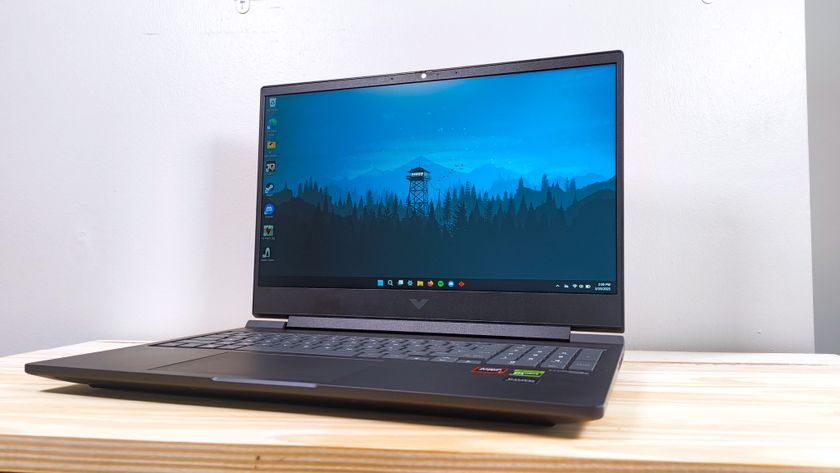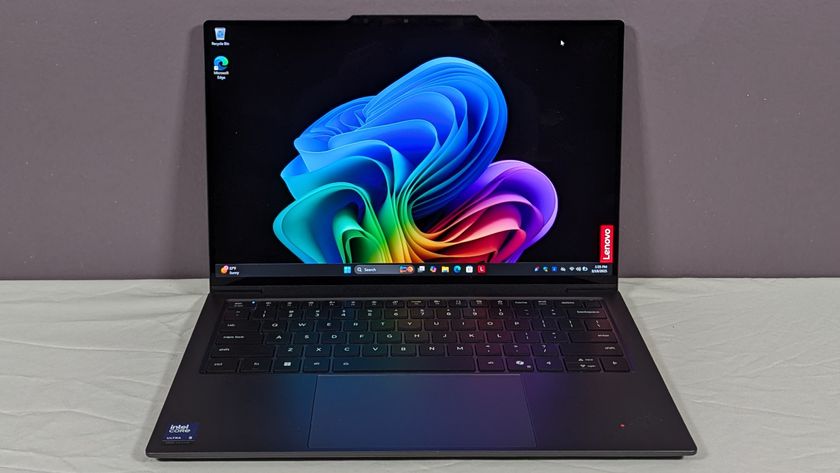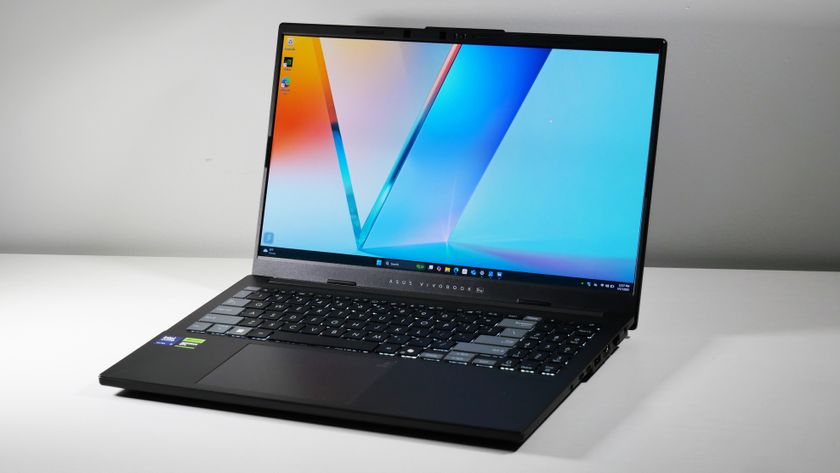Laptop Mag Verdict
The Joybook Lite has a compact and unique chassis, but this netbook's battery life and keyboard don't stand up to its peers.
Pros
- +
Unique lid design
- +
Compact build
- +
Bright, glossy display
- +
Loud speakers
Cons
- -
Cramped keyboard
- -
Short battery life
- -
Loud mouse button
Why you can trust Laptop Mag
Editors' Note: The BenQ Joybook Lite we reviewed was imported from Taiwan. BenQ says that if the system were to be offered in the U.S. it would retail for around $499 (we paid the equivalent of $550). If the BenQ Joybook Lite U101 becomes available in the U.S., we will update this review.
When just about every 10-inch mini-notebook features the same processor, RAM, and operating system, competitors have to find some way of differentiating themselves. BenQ, the latest entrant into this crowded market, hopes to do so by adding a little visual flair. While the BenQ Joybook Lite U101 has the run-of-the-mill netbook specs, including an Intel Atom processor, 1.5GB of RAM, and Windows XP Home, spicing up the system is an interesting, artistic lid design and a 10-inch, 16:9 aspect ratio display (the first on a netbook to date). However, its cramped keyboard and short battery life will be a deal breaker for some.
A Unique Design
You can't blame BenQ for feeling that netbooks were starting to look all too similar, and it strives to ensure you won't forget the U101. The lid of this system has an emoticon design: Small light blue symbols (reminiscent of the Wingdings font) are printed on the blue (also available in white, black, and pink) glossy lid.
Upon close inspection, the diagonal pattern repeatedly spells out Joybook Lite. The artistic lid is undoubtedly unique and bound to attract some consumers, but others may be put off by its attention-grabbing pattern and prefer something more along the lines of the HP Mini 1000's subtle Imprint finish. According to BenQ, the cover has also undergone a special molding process to protect it from wear and tear.
The size and weight of the Joybook Lite is standard fare for a 10-inch system. At 10.2 x 7.4 x 1.3 inches and 2.6 pounds, it weighs the same as the Lenovo S10 and MSI Wind. While not as compact as the HP Mini 1000, it is shorter and narrower than both the MSI Wind and Samsung NC10. With a travel weight of 3.2 pounds with its AC adapter, the system felt almost nonexistent when we tossed it (inside the included neoprene sleeve) into a shoulder bag.
Three USB ports, VGA, Ethernet, headphone, and a microphone jack surround the Joybook Lite, and a 4-in-1 card reader is on the right side.
Cramped Keyboard, Loud Mouse Buttons
BenQ touts that its keyboard is 90 percent that of a full-size keyboard. However, while it is more spacious and comfortable than those on 9-inch netbooks, such as theDell Inspiron Mini 9 and the Acer Aspire one, it is noticeably smaller and less comfortable than what you'll find on the HP Mini 1000, MSI Wind, and Samsung NC10. The keys on the left edge, including the Caps Lock and Tab, are no wider than a Peanut M&M. Given the extra space on both sides of the keyboard, we are puzzled as to why BenQ didn't extend the layout all the way to the edges. The keys themselves had a nice feel and provided sufficient bounce when typing, though with a bit of flex.
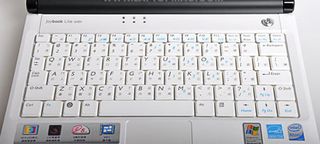
Click to enlarge
While most of the keys are positioned correctly, the right Shift key is placed to the right of the Up arrow, rather than in its usual location next to the question mark key. This is a recurring flaw in netbooks, including the Dell Inspiron Mini 9 and the ASUS Eee PC line.
The touchpad is a decent size and offered a nice, textured feel as we navigated the cursor around the desktop. Similar to the MSI Wind, BenQ went with a single, rocker-style mouse bar. While the bar was easy to click, it produced an annoyingly loud sound when pressed.
16:9 Aspect Ratio Display
The Joybook Lite's 10.1-inch display has a 16:9 aspect ratio with a native resolution of 1024 x 576 (which strays from the typical 1024 x 600 netbook resolution). The first 10-inch netbook with a 16:9 aspect ratio, the Joybook will allow for viewing movies or DVDs (using an external optical drive) without the black bars (or with thinner black bars) along the top of the screen. While this aspect ratio makes a difference on larger 16-inch notebooks, we don't really see the benefit of it on a smaller screen that one won't use frequently to watch DVDs or high-def movies.
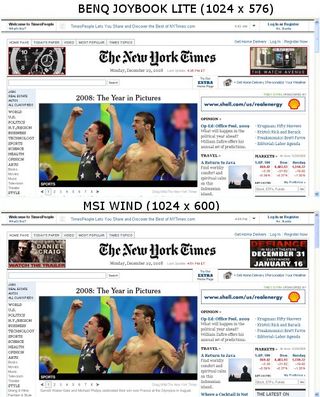
Click to enlarge
The loss of 24 vertical pixels also limits the amount of space you have on the screen. In a side-by-side comparison with 1024 x 600-pixelresolution netbooks, the Joybook showed one to two fewer lines of text on Web pages, resulting in more scrolling for end users. In the graphic above, you can see that additional text, otherwise hidden on the Joybook Lite,is visible on the MSI Wind. Screen size aside, the LED-backlit screen was bright and pleasant to use. Even with its glossy treatment, viewing angles were solid.
Webcam and Audio
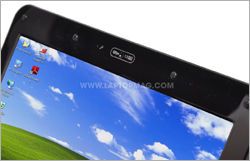
Click to enlargeAbove the display is a 1.3-megapixel webcam that served up clear images when videoconferencing with a colleague over Skype. The video showed a bit of motion blur when we waved our hands, but the caller didn't complain of grayness or darkness.
The Joybook Lite's dual speakers are positioned just below the front edge of the netbook. The speakers were quite loud for a mini-notebook and produced reasonably full audio when listening to the streaming music on Pandora.com.
Performance
The BenQ Joybook Lite uses the same 1.6-GHz Intel Atom processor as its closest rivalsand runs Windows XP Home. While we weren't able to run benchmarking program PCMark05, applications loaded relatively quickly even when we had several others running in the background. We were able to listen to streaming music over Pandora, surf the Web in Firefox 3, and write a document in Microsoft Word 2003 at the same time with no hang-ups. Even watching an episode of Heroes using an external DVD drive didn't tax the Joybook Lite enough to slow down other programs' response times.
The BenQ Joybook Lite's integrated graphics scored 653 on 3DMark03 (which tests DirectX 9 performance), which is 168 points below the category average. You shouldn't count on using this machine for gaming, but the system did handle streaming video and DVD playback without a hiccup.
During testing, the underside of the unit heated up, measuring a slightly troubling 96 degrees; the fan also became noticeably louder than most netbooks during heavy usage. The rest of the system, including the keyboard and touchpad, were not noticeably warm.
Storage
The Joybook Lite's 160GB, 5,400-rpm Toshiba MK1652GSX hard drive booted Windows XP in a solid 45 seconds. The LAPTOP Transfer Test, in which we duplicate 4.97GB of mixed media files, took 6 minutes and 42 seconds, or a rate of 12.7 MBps, which is about 1 MBps slower than the average netbook speed.
Upgrade-Friendly
Though 160GB of onboard storage should be sufficient, removing the battery and swapping out the 2.5-inch SATA drive with an aftermarket drive or SSD is easy. On the backside of the system is a slot labeled SSD. Though opening the SSD slot will void the warranty, it contains a PATA/ZIF slot and room for a very tiny, 1.8-inch disk. An additional panel provides access to the RAM and to an open mini-PCI-e slot that could potentially accommodate a PCI-e SSD card or 3G modem (a SIM card slot is behind the battery).
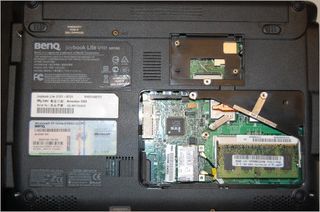
Click to enlarge
Short Endurance
The Joybook's three-cell battery produced an unimpressive runtime of 2 hours and 37 minutes on the LAPTOP Battery Test, more than an hour short of the netbook average of 3:48, and at the low end for the category. While only a minute shorter than the Lenovo IdeaPad S10, it comes in 20 minutes less than the three-cell HP Mini 1000 (2:56). If battery life is important, we recommend holding out for a Joybook with a six-cell battery (assuming you can get your hands on one); you'll likely get around 5 hours of endurance, given that the MSI Wind and Samsung NC10, both of which feature six-cell batteries, lasted 5:13 and 6:34, respectively.
Wi-Fi Performance
The 802.11b/g Wi-Fi card provided a strong connection for working in the cloud. The Joybook Lite's throughput of 19.4 Mbps at 15 feet and 18.7 Mbps at 50 feet from our access point was much higher than the netbook averages of 17.3 Mbps and 13.6 Mbps from those respective distances. The Joybook Lite's scores, however, are not as strong as the Samsung NC10 (20.8/16.0 Mbps); and the U101 is not equipped with 802.11n, unlike the NC10. In our day-to-day Web activities, streaming music over Slacker was fluid and video clips on Hulu.com were void of any pauses.
Software and Warranty
Our Joybook Lite U101 came preinstalled with Windows XP Home. Also preloaded on our unit, which was ordered from Taiwan, was a full copy of Microsoft Office 2003, CyberLink PowerDVD, and Eset NOD32 security software that protects against viruses and spyware.
BenQ backs the Joybook Lite with a one-year Overseas Regional Warranty.
Verdict
BenQ valiantly tries to make a splash in the netbook space. The Joybook Lite U101 sports a fun design and offers solid performance, but it's outshined by other 10-inch netbooks when it comes to endurance and ergonomics. For example, the $499 Samsung NC10 comes standard with a longer lasting six-cell battery and has a better keyboard. This netbook has style, but we wish it had more substance.
BenQ Joybook Lite U101 Specs
| Bluetooth | Bluetooth 2.0 |
| Brand | BenQ |
| CPU | 1.6-GHz Intel Atom N270 |
| Card Slots | 4-1 card reader |
| Company Website | benq.com |
| Display Size | 10 |
| Graphics Card | Intel GMA 950 |
| Hard Drive Size | 160GB |
| Hard Drive Speed | 5,400rpm |
| Hard Drive Type | SATA Hard Drive |
| Native Resolution | 1024x576 |
| Operating System | MS Windows XP Home |
| Ports (excluding USB) | VGA, Microphone, Headphone, Ethernet |
| RAM | 1.5GB |
| RAM Upgradable to | 1 GB |
| Size | 10.2 x 7.4 x 1.3 inches |
| USB Ports | 3 |
| Video Memory | Shared |
| Warranty/Support | One-year Overseas Regional Warranty/ N/A |
| Weight | 2.6 pounds |
| Wi-Fi | 802.11b/g |
